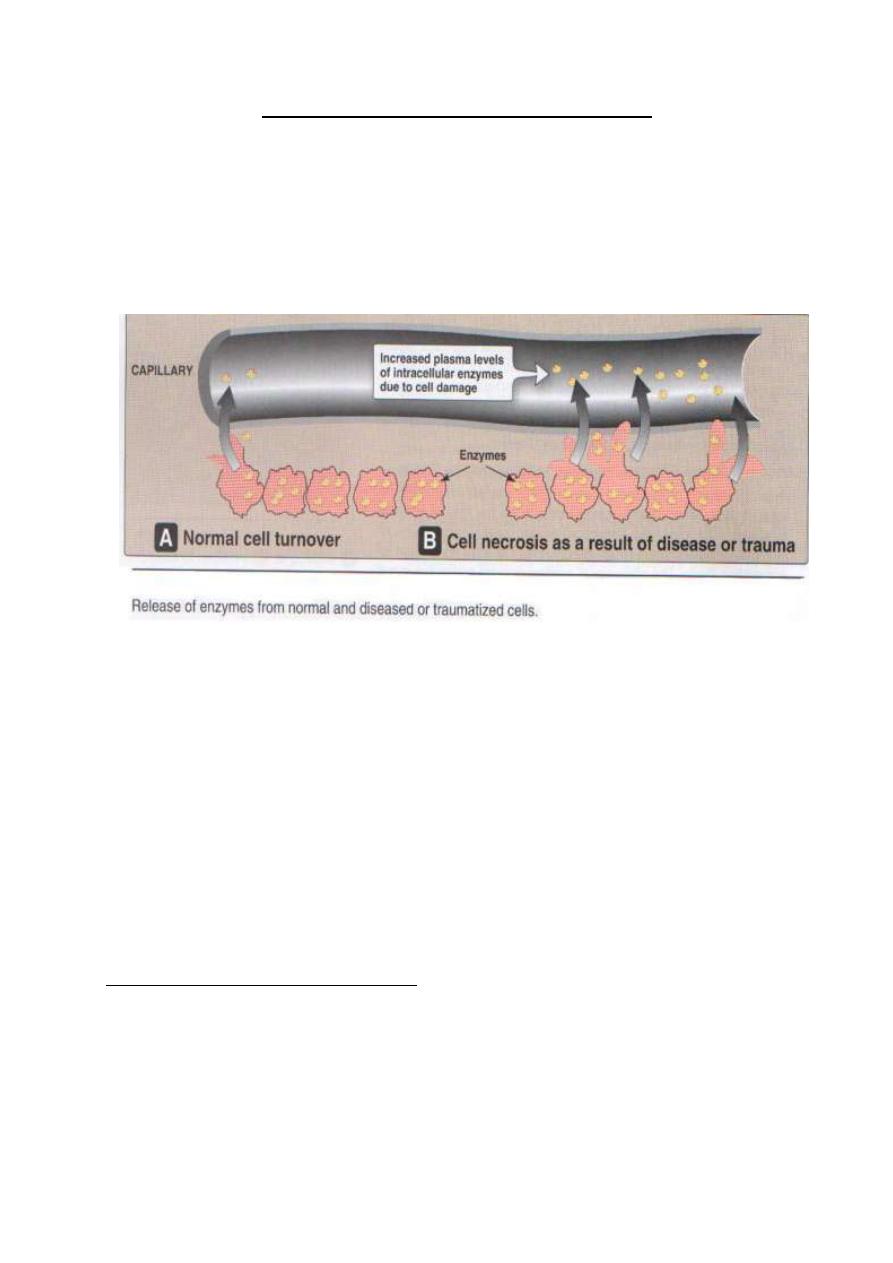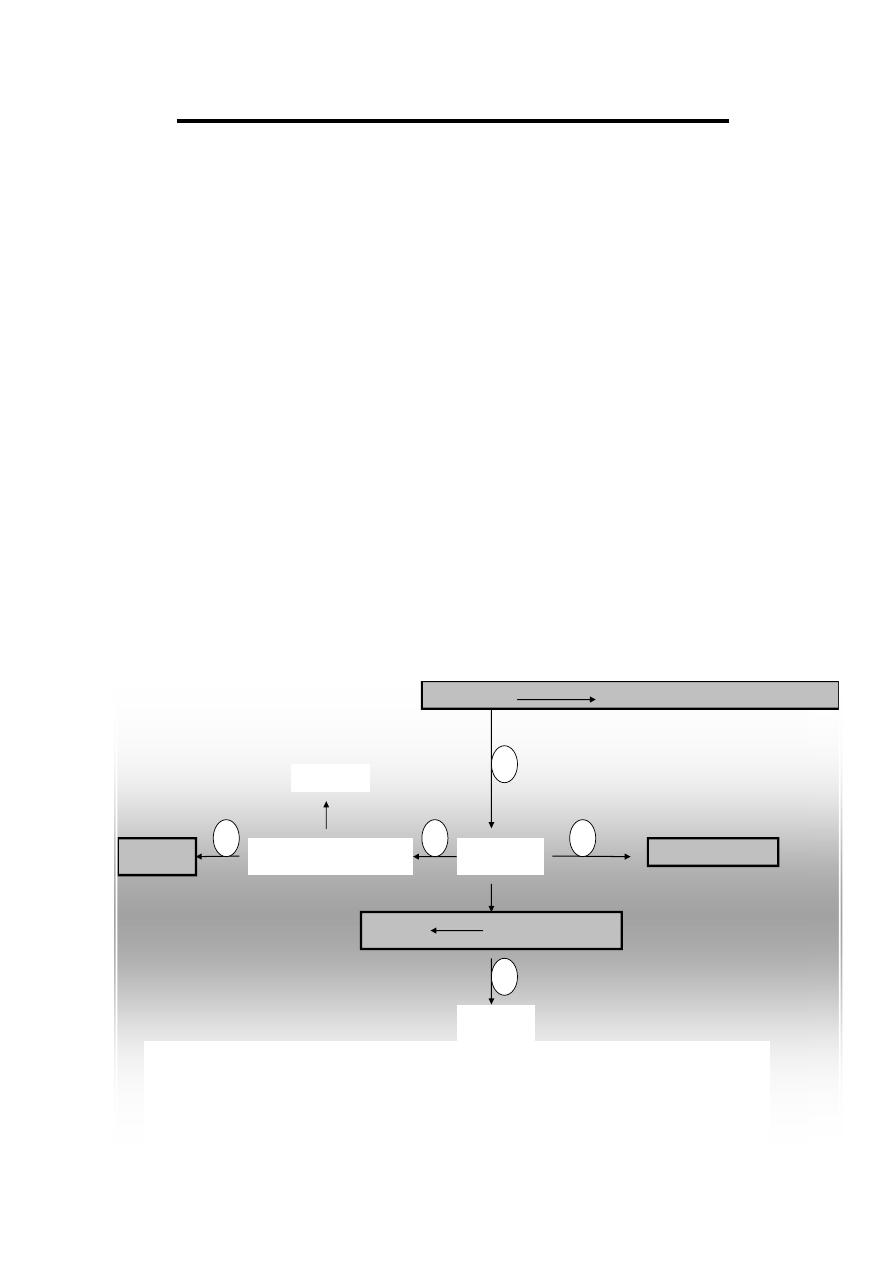
qwertyuiopasdfghjklzxcvbnmqwerty
uiopasdfghjklzxcvbnmqwertyuiopasd
fghjklzxcvbnmqwertyuiopasdfghjklzx
cvbnmqwertyuiopasdfghjklzxcvbnmq
wertyuiopasdfghjklzxcvbnmqwertyui
opasdfghjklzxcvbnmqwertyuiopasdfg
hjklzxcvbnmqwertyuiopasdfghjklzxc
vbnmqwertyuiopasdfghjklzxcvbnmq
wertyuiopasdfghjklzxcvbnmqwertyui
opasdfghjklzxcvbnmqwertyuiopasdfg
hjklzxcvbnmqwertyuiopasdfghjklzxc
vbnmqwertyuiopasdfghjklzxcvbnmq
wertyuiopasdfghjklzxcvbnmqwertyui
opasdfghjklzxcvbnmqwertyuiopasdfg
hjklzxcvbnmrtyuiopasdfghjklzxcvbn
mqwertyuiopasdfghjklzxcvbnmqwert
yuiopasdfghjklzxcvbnmqwertyuiopas
dfghjklzxcvbnmqwertyuiopasdfghjklz
xcvbnmqwertyuiopasdfghjklzxcvbnm
qwertyuiopasdfghjklzxcvbnmqwerty
Plasma Enzymes in Diagnosis
[Prof. Dr. H.D.El-Yassin]
october [2012]

Professor Dr.H.D.El-Yassin
2
Plasma Enzymes in Diagnosis
Most enzymes are present in cells at much higher concentrations than in plasma. Some
occur predominantly in cells of certain tissues, where they may be located in different
cellular compartments such as the cytoplasm or the mitochondria. 'Normal' plasma
enzyme levels reflect the balance between the rate of synthesis and release into plasma
during cell turnover, and the rate of clearance from the circulation.
Plasma contains several enzymes, some of which are functional in the plasma, while
others are merely present in plasma due to leakage from tissues. Lipoprotein lipase,
psuedocholinesterase and enzymes concerned in the coagulation of blood and the
dissolution of the blood clot are enzymes that serve a function in the plasma. Though many
other enzymes have no function in the plasma, they are still useful as diagnostic tools.
Measurement of their levels in plasma offers valuable information about diseases
involving the tissue of their origin.
It is easier to measure enzyme activity in body fluids, by monitoring changes in either
substrate or product concentrations, than to measure enzyme protein concentration
directly.
The enzyme activity in plasma may be:
Increased due to proliferation of cells, an increase in the rate of cell turnover or
damage or in enzyme synthesis (induction), or to reduced clearance from plasma
Lower than normal, very occasionally due to reduced synthesis or congenital
deficiency.

Professor Dr.H.D.El-Yassin
3
Changes in plasma enzyme activities may sometimes help to detect and localize tissue
cell damage or proliferation, or to monitor treatment and progress of disease
Assessment of Cell Damage and Proliferation
Plasma enzyme levels depend on:
1. The rate of release from damaged cells which, in turn, depends on the rate
which damage is occurring:
2. The extent of cell damage.
In the absence of cell damage the rate release depends on:
1. The rate of cell proliferation:
2. The degree of induction of enzyme synthesis
These factors are balanced by:
• The rate of enzyme clearance from circulation.
Acute cell damage, for example in viral hepatitis, may cause very high plasma enzyme
activities that fall as the condition resolves. By contrast, the liver may be much more
extensively involved in advanced cirrhosis but the rate of cell damage is often low and
consequently plasma enzyme activities may be only slightly raised or be within the
reference range. In very severe liver disease plasma enzyme activities may even fall
terminally, when the number of hepatocytes is grossly reduced.
It is not known how most enzymes are removed from, or their action inhibited in the
circulation. Relatively small peptides, such as
α-amylase, can be cleared by the
kidneys: most enzymes are large proteins and are probably catabolized by plasma
proteases before being taken up by the reticuloendothelial system. In health each
enzyme has a fairly constant and characteristic biological half-life; knowledge of this half-
life may be of help in assessing the time since the onset of an acute illness. After a
myocardial infarction, for example, plasma levels of creatine kinase and aspartate
transaminase fall to normal before those of lactate dehydrogenas, which has a longer
half-life. The half-life may be lengthened if there is circulatory impairment.
Renal glomerular impairment may delay the rate of fall of those plasma enzymes
cleared through the kidneys. For example plasma amylase activity may be high due
to renal glomerular impairment, rather pancreatic damage

Professor Dr.H.D.El-Yassin
4
Localization of Damage
Most of the enzymes commonly measured to assess tissue damage are present in
nearly all cells, although their relative concentrations in certain tissues may differ.
Measurement of the plasma activity of an enzyme known to be in high concentration
within cells of a particular tissue may indicate an abnormality of those cells, but the
results will rarely enable a specific diagnosis to be made. For example if there is
circulatory failure after a cardiac arrest very high plasma levels of enzymes originating
from many tissues may occur because of hypoxic damage to cells and reduced rates of
clearance: the raised plasma levels of 'cardiac' enzymes do not necessarily mean that
a myocardial infarct caused the arrest
The diagnostic precision of plasma enzyme analysis may be improved by
1. Estimation of more than one enzyme. .Many enzymes are widely distributed, but
their relative concentrations may vary in different tissues. For instance, although
both alanine and aspartate transaminases are abundant in the liver, the
concentration of aspartate transaminase is much greater than that of alanine
transaminase in heart muscle
2. Isoenzyme determination. Some enzymes exist in more than one form: these
isoenzymes may be separated by their different physical or chemical properties. If
they originate in different tissues such identification will give more information than
the measurement of plasma total enzyme activity: for example, creatine kinase
may be derived from skeletal or cardiac muscle, but one of its isoenzymes is
found predominantly in the myocardium
3. Serial enzyme estimations. The rate of change of plasma enzyme activity is
related to a balance between the rate of entry and the rate of removal from the
circulation. A persistently raised plasma enzyme activity is suggestive of a
chronic disorder or occasionally of impaired clearance.
The distribution of enzymes within cells may differ. Alanine transaminase and lactate
dehydrogenase are predominantly located in cytoplasm and glutamate
dehydrogenase in mitochondria, whereas aspartate transaminase occurs in both
these cellular compartments. Different disease processes in the same tissue may
affect the cell in different ways, causing alteration in the relative plasma enzyme activ-
ities

Professor Dr.H.D.El-Yassin
5
Non-specific Causes of Raised Plasma Enzyme Activities
Before attributing a change in plasma enzyme activity to a specific disease process it is
important to exclude the presence of factitious or nonspecific causes.
Slight rises in plasma aspartate transaminase activities are common, non-specific
findings in many illnesses. Moderate exercise, or a large intramuscular injection, may
lead to a rise in plasma creatine kinase activity; isoenzyme determination may identity
skeletal muscle as the tissue of origin
Some drugs, may induce synthesis of the microsomal enzyme, gamma-
glutamyltransferase, and so increase its plasma activity in the absence of disease.
Plasma enzyme activities may be raised if the rate of clearance from: the circulation is
reduced. In the absence disease this may occur if for example the plasma enzyme
forms.-
• macromolecules (aggregates), such as in macroamylasaemia .
• complexes with immunoglobulins. as occasionally occur with lactate dehydrogenase,
alkaline phosphatase creatine kinase.
Factors Affecting Results of Plasma Enzyme Assays
1. Analytical factors affecting results. The total concentration of all plasma
enzyme proteins is less than 1 g/L. Results of enzyme assays are not usually
expressed as concentrations, but as activities. Changes in concentration may
give rise to proportional changes in catalytic activity, but the results of such
measurements depend on many analytical factors. These include the
concentrations of the substrate and product, the pH and temperature at which
the reaction is carried out. The type of buffer, and the presence of activators or
inhibitors. Because the definition of 'international units' does not take these
factory into account, results from different laboratories, apparently expressed in
the same units, may not be directly comparable. Therefore, plasma enzyme
activities must be interpreted in relation to the reference ranges from the issuing
laboratory.

Professor Dr.H.D.El-Yassin
6
2. Physiological factors affecting enzyme activities include for example:
a. Age: plasma aspartate transaminase activity is moderately higher during
the neonatal period than in adults: plasma alkaline phosphatase activity of
bony origin is higher in children than in adults and peaks during the
pubertal bone growth spurt before falling to adult levels.
b. Sex:
plasma γ-glutamyltransferase activity is higher in men than-in-
women.
c. physiological conditions:
Plasma alkaline phosphatase activity rises during the last trimester of pregnancy
because of the presence of the placental isoenzyme: several enzymes, such as the
transaminases and creatine kinase rise moderately in plasma during and
immediately after labour or strenuous exercise.
Plasma enzyme activities must be interpreted in relation to the sex and age-matched refer-
ence ranges of the issuing laboratory.

Professor Dr.H.D.El-Yassin
7
Genetic basis for enzyme synthesis:
Since all enzymes are proteins, their synthesis follows the general pattern of protein
synthesis and is regulated by genes. For every enzyme, there is said to be one gene
(one gene, one enzyme hypothesis); where an enzyme is a complex protein containing
more than one protein subunit more than one gene may be concerned in its synthesis.
Genetic mutation results in abnormal DNA code and synthesis of an abnormal enzyme
protein. Since the abnormal enzyme cannot serve the normal function, a metabolic
abnormality occurs and this is transmitted to the progeny. Such transmittable
abnormalities of metabolism due to abnormal enzyme molecules are known as:
'Molecular diseases' or 'Inborn Errors of Metabolism'. Phenylketonuria, alkaptonuria,
pentosuria, glycogen storage disease, galactosemia and cystinuria are but a few of
several known molecular diseases.
1. Phenylketonuria: is an autosomal recessive disorder caused by an abnormality of the
phenylalanine hydroxylase.. Because phenyl alanine can not be converted to tyrosine
it accumulates in plasma and is secreted in the urine with its metabolites, such as
phenylpyrovic acid; the disease acquired its name from the detection of the latter
"phenylketone" in the urine.(see diagram below)
Melanin
Alkapton
Homogentistic acid
Thyroid hormones
Dihydroxyphenylalanine
(DOPA)
TCA cycle
Adrenaline
Phenylalanine
phenylpyruvic acid (phenylketone) etc.
TYROSINE
1
2
4
3
3
Diagram showing the metabolism of tyrosine and some inborn errors of the aromatic amino acid pathways.
Substances highlighted may be present in abnormal amounts in certain inborn errors of metabolism.
1
phenylalanine hydroxylase
phenylketonuria
2
homogentisic acid oxidase
alkaptonuria
3
tyrosinase
albinism
4
thyroid enzymes
thyroid dyshormonogenesis

Professor Dr.H.D.El-Yassin
8
2. Alkaptonuria: is an autosomal recessive disorder due to the deficiency of
homogentisic acid oxidase. Homogentisic acid accumulates in tissue and blood and is
passed in the urine. Oxidation and polymerization of homogentisic acid produces the
pigment alkapton in much the same way as polymerization of DOPA produce melanin.
Deposition of alkapton in cartilages, with consequent darkening is called ochronosis
and result in visible darkening of the cartilages of the ears.. Conversion of
homogentisic acid to alkapton is accelerated in alkaline conditions and most obvious
abnormality in alkaptonuria is darkening of the urine as it becomes more alkaline on
standing. The condition is compatible with normal life span despite the tendency for
patient to develop arthritis in later life. .(refer to previous diagram)
3. glycogen storage disease: a deficiency of one of the enzymes involved in the
glycogenesis or glycogenolysis results in the accumulation of normal or abnormal
glycogen with hepatomegaly: in von Gierk's disease, the least rare glycogen storage
disorder, there is a deficiency of glucose-6-phospate. Fasting hypoglycemia occurs
because the enzyme is essential for the conversion of glucose-6-phosphate to
glucose.
4. galactosaemia an autosomal recessive disorder due to a deficiency of galactose-1-
phosphate uridyltransferase , may cause cirrhosis of the liver if untreated.
5. cystinuria: is an autosomal recessive inherited abnormality of tubular reabsorption, with
excessive urinary excretion of the dibasic amino acids: cystine, arginine and lysine.
